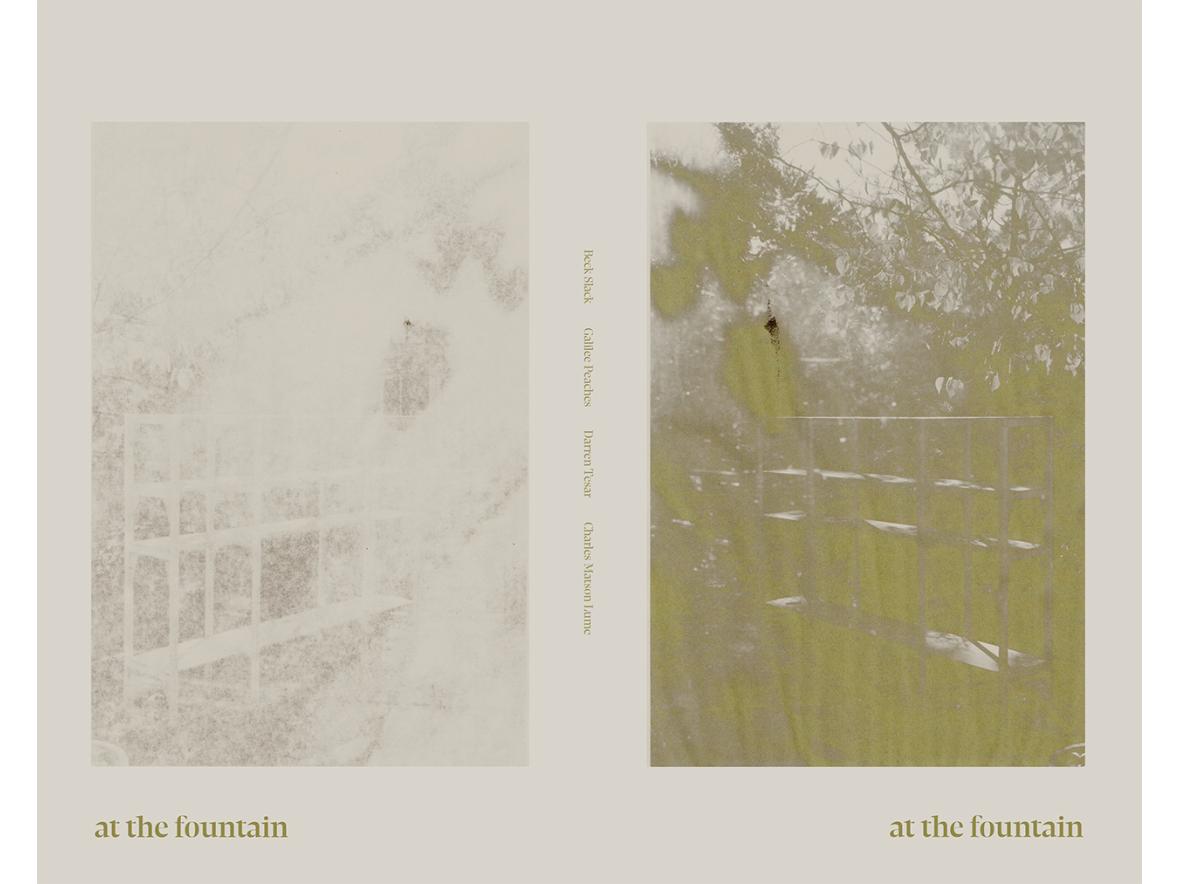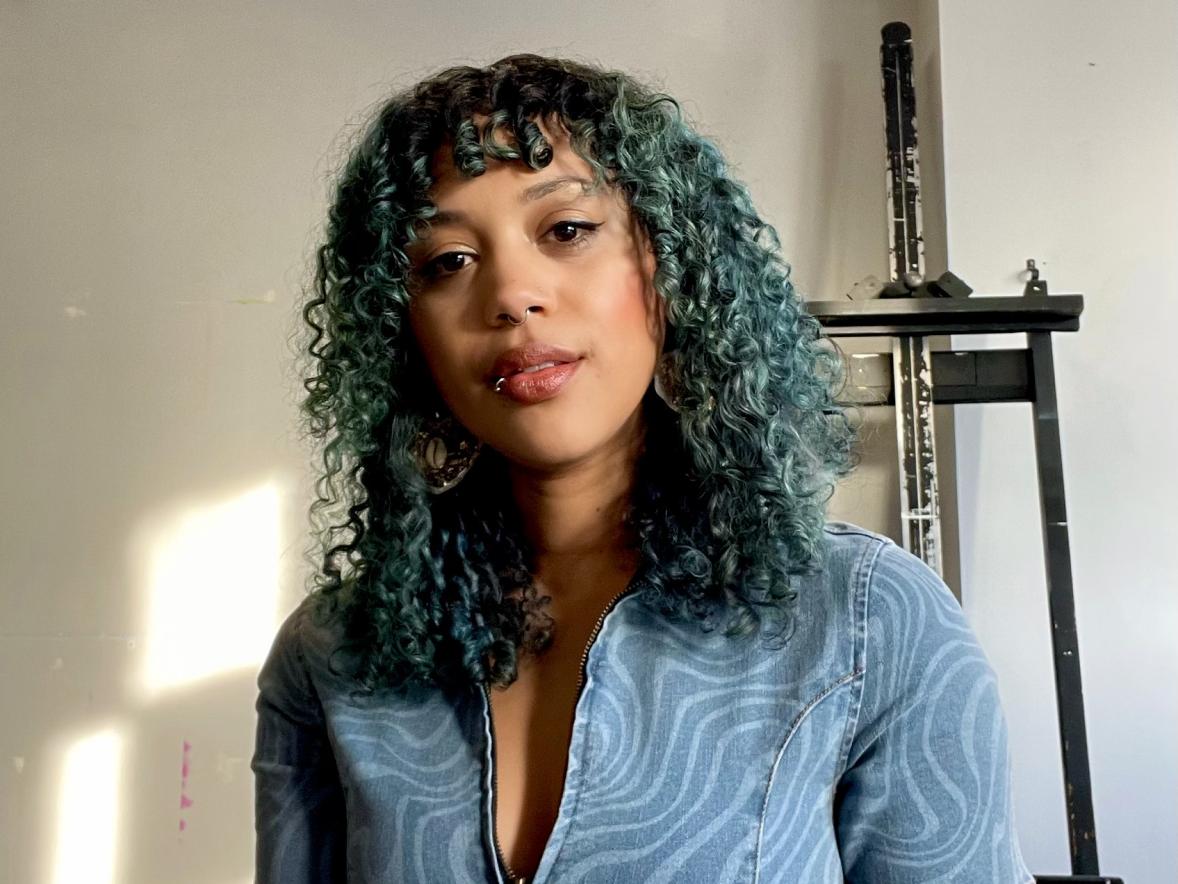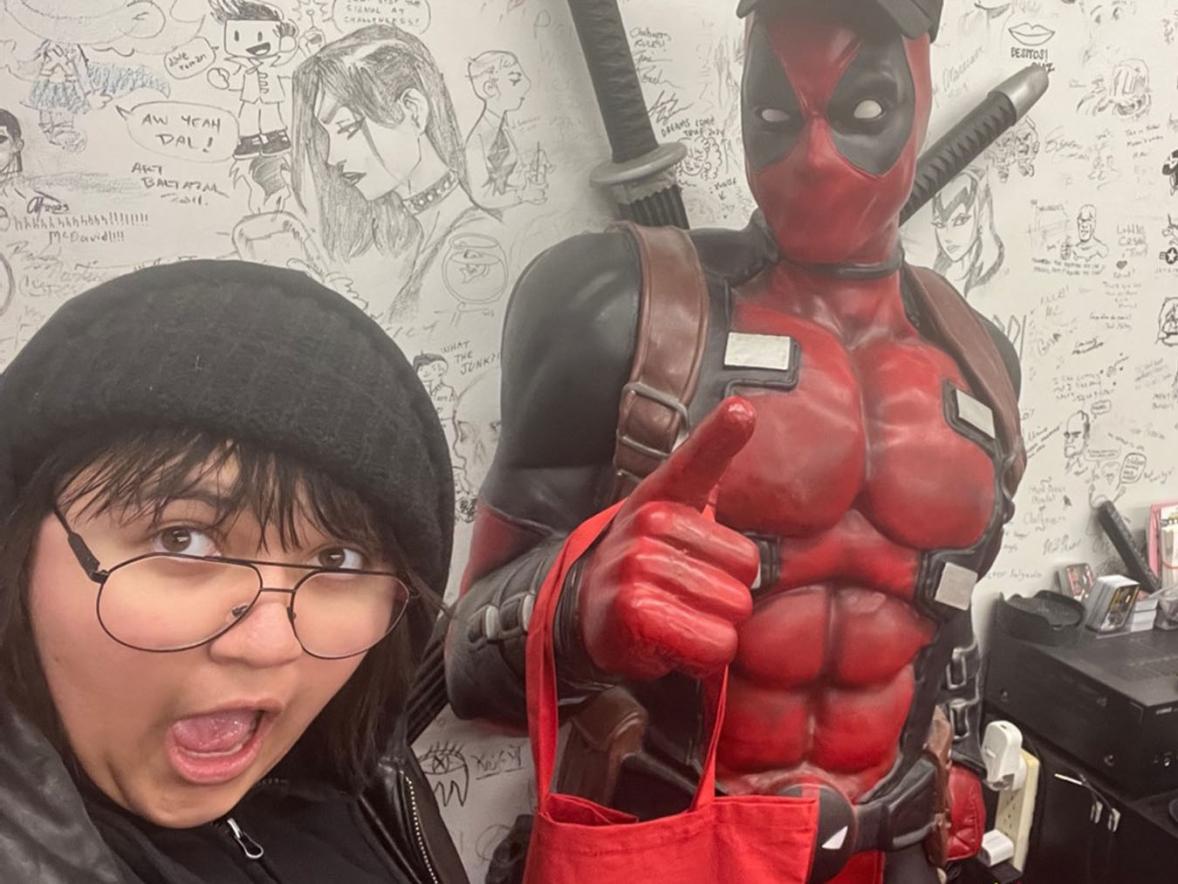Photos by Erika Saindon and Mary Climes
Calvin and Hobbes. Batman. Snoopy. What comical, heroic or nostalgic characters spring into your mind with a * POW! * when you hear the word “comics?”
Does Chicago come to mind? If not, it should. Characters like Dick Tracy, Little Orphan Annie, Jimmy Corrigan and so many more were born in Chicago.
Between 1880 and 1960, the publishing industry in the Windy City played a large role in the development and transformation of comics as a legitimate art form.
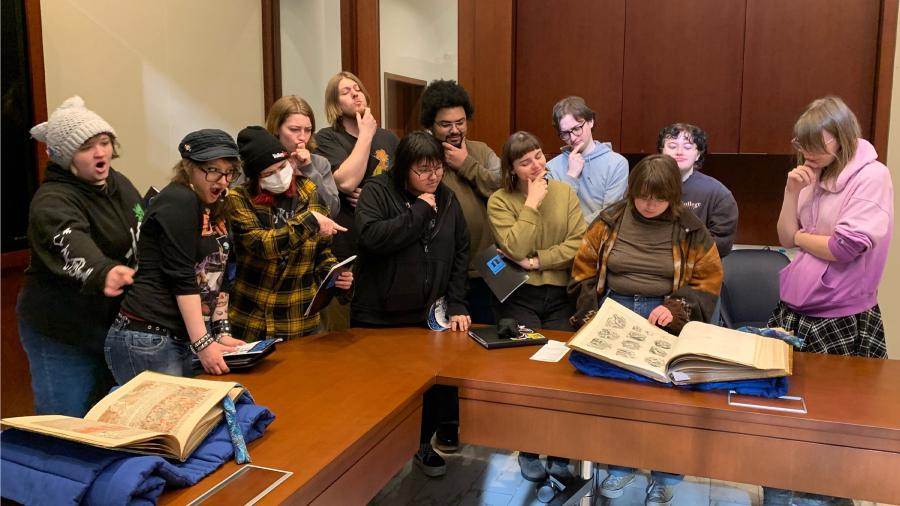
To discover the rich historical and contemporary comics scene, 13 UW-Stout students ventured around the city as part of an inaugural faculty-led study away Comics in Chicago course, led by School of Art and Design Assistant Professor Mary Climes.
“My goal is for students to be immersed in the culture and history of one of the best comic cities in the world,” Climes said. “Each space we visit allows students to broaden their knowledge of comics, visual storytelling and illustration.”
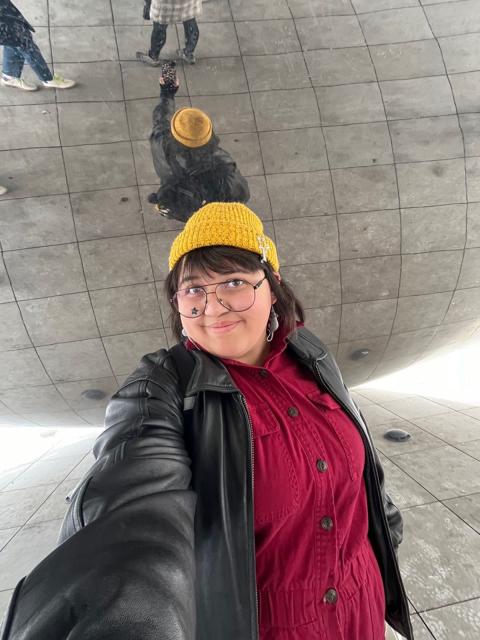
Erika Saindon, of Albert Lea, Minn., has a concentration in comics and working in a Chicago gallery is her ultimate dream.
She joined her studio art peers, as well as graphic design, animation and illustration students on an eight-hour Amtrak ride from St. Paul to Chicago, spending a week in January visiting museums, cultural spaces, libraries, galleries and artist studios.
“When I first saw the city, I knew that this was the place for me,” Saindon said. “As a girl from a small town, you grow up realizing how undervalued art is.
“But in Chicago, there is art everywhere. Whether at different museums we visited, our daily outings or murals on buildings, like the nine-story mural of blues legend Muddy Waters. Chicago is entirely built of art and the artists in their communities.”
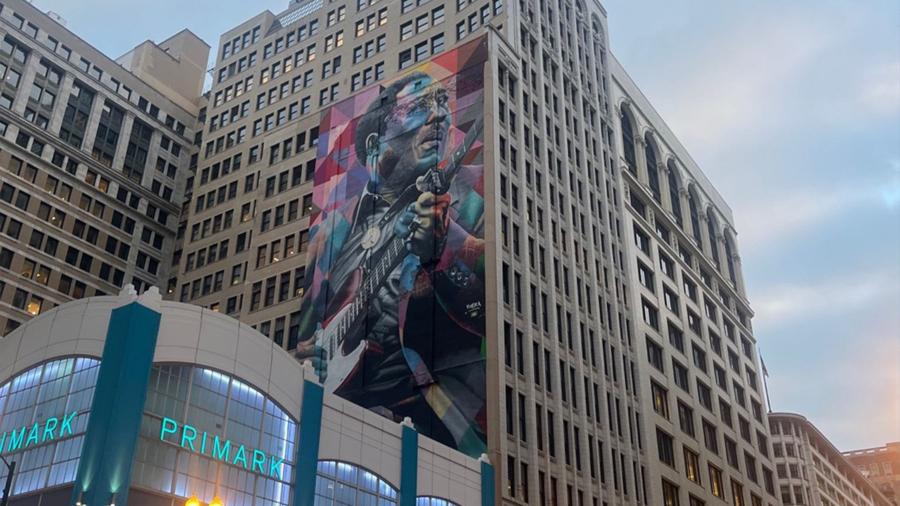
The class stayed in downtown Chicago, within walking distance of all their destinations, allowing them to take in the whole city, a new experience for Saindon.
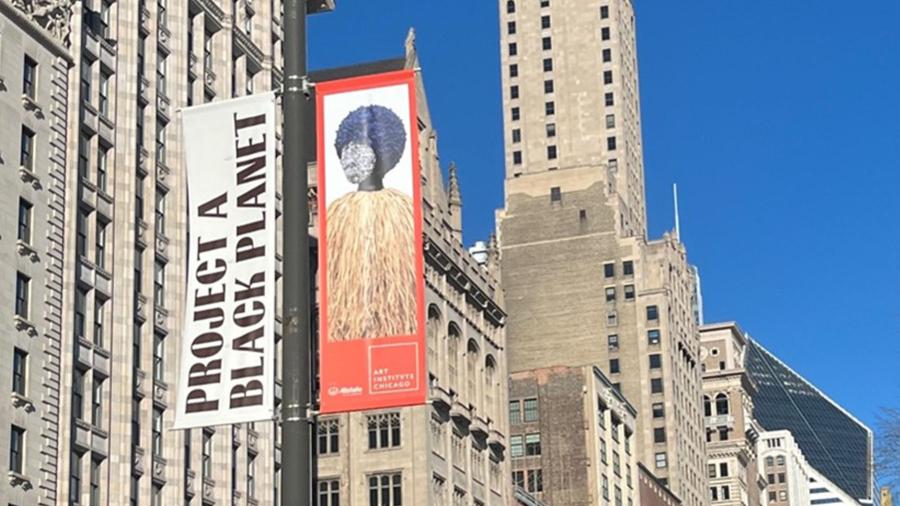
They wandered through the Art Institute of Chicago, taking in centuries of artwork, including “Project a Black Planet: The Art and Culture of Panafrica,” exhibiting more than 350 works by artists from Africa, the Americas and Europe, spanning nearly a century of art.
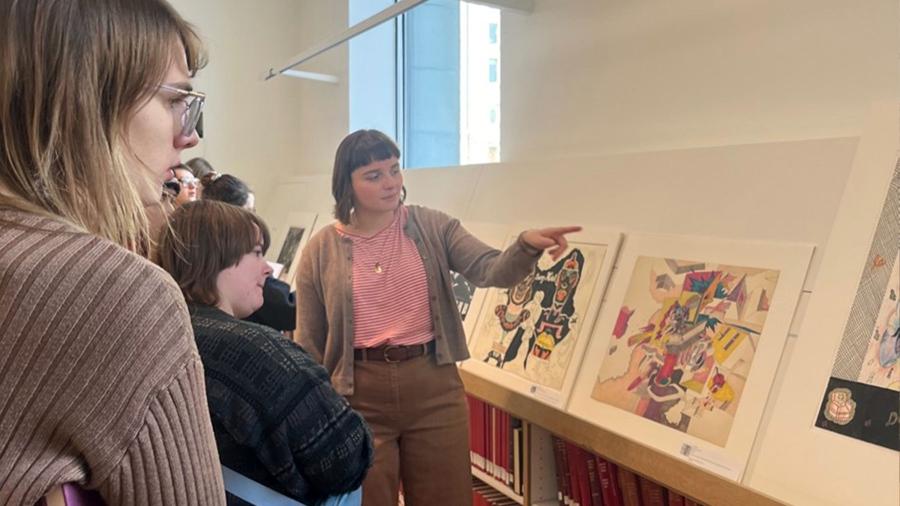
In the museum’s Prints and Drawing Study Collection, they viewed original comic pages and were lucky enough to look at some drawings unprotected by glass, as well as unfinished works before going to print.
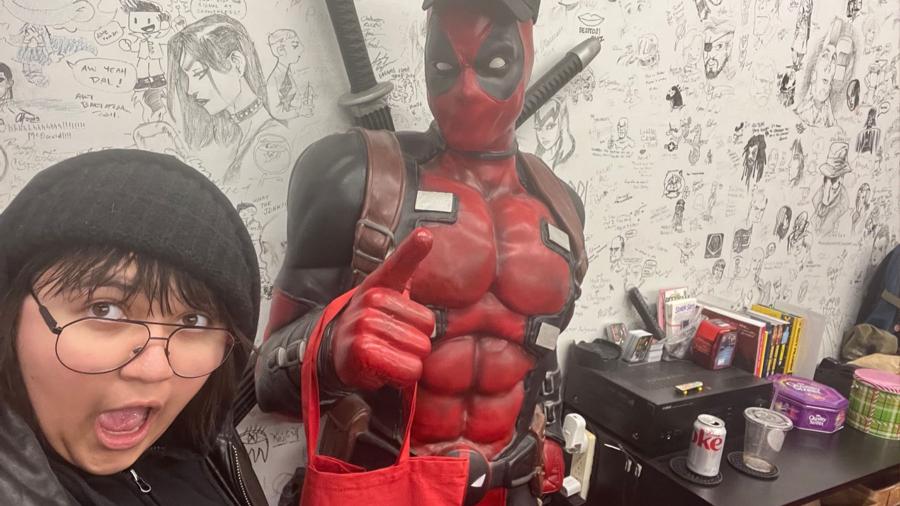
A walk to Wicker Park led the class to a cache of bookstores, including a huge Barnes & Noble and Quimby’s, a local indie comics store – a favorite to many. They read comics set in and by Chicago cartoonists, including Chris Ware, Emil Ferris and Ivan Brunetti.
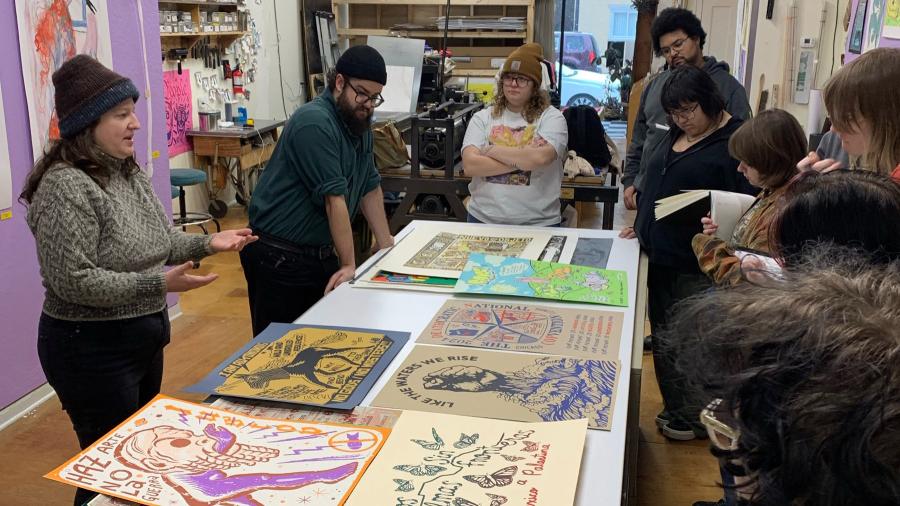
They saw lithography, relief, etching and screen print examples at Hoofprint press shop, and attended a risograph workshop at Spudnik Press, a community print studio, creating their own risograph printed comic books inspired by the city.
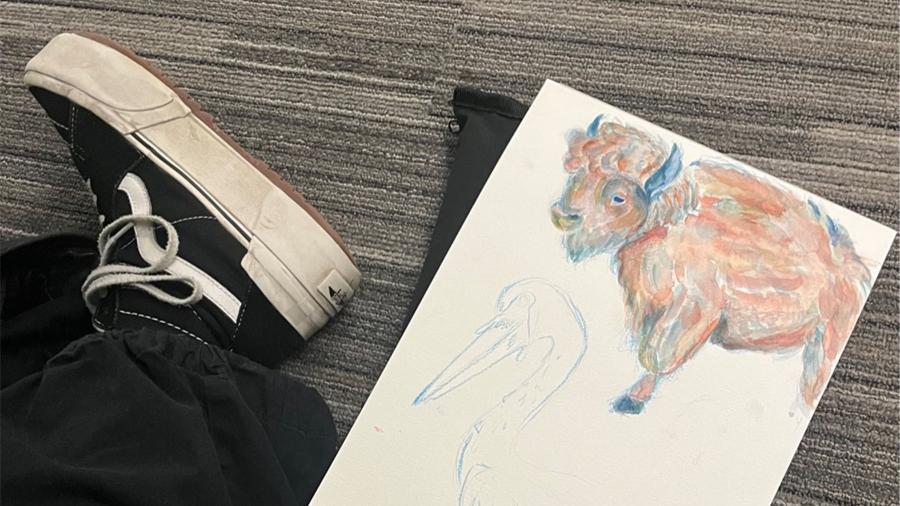
As a studio course, each student kept a daily diary of comic sketches and scientific illustrations. They spent time studying the wildlife exhibits and the vast collection of scientific illustrations at the Field Museum.
Saindon painted birds, bison and more with watercolors as visitors watched and walked around the museum.
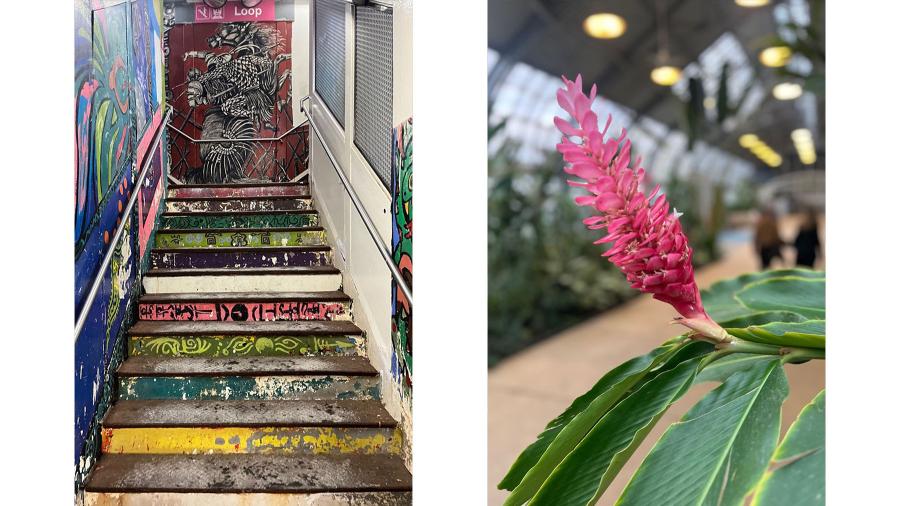
The subway in the Latinx District was the most colorful subway she had ever seen. “Going to this part of Chicago was my all-time favorite part of the trip. Mostly because this is my culture, and I love it being celebrated and recognized, especially throughout art,” Saindon said.
She stayed warm basking among the tropical plants at the Garfield Park Conservatory, taking time to smell the roses and paint the bright colored flowers.
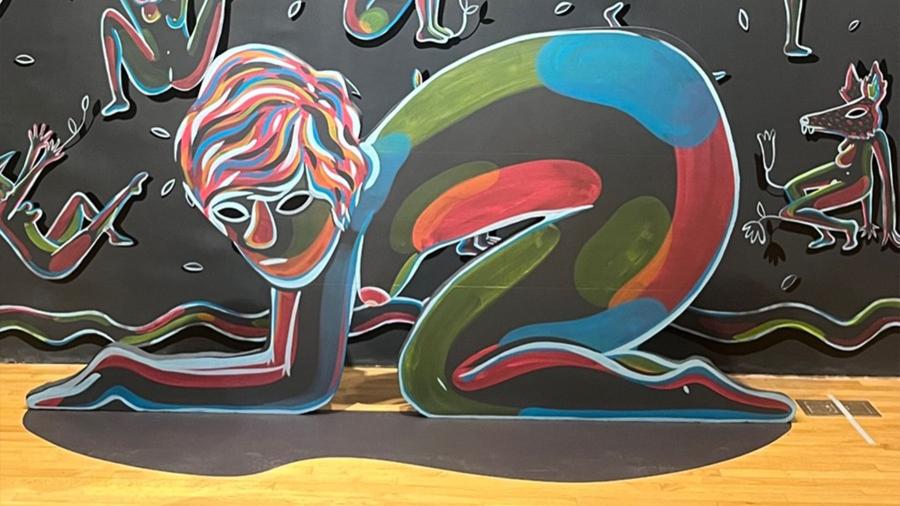
At the National Museum of Mexican Art, they visited Cecilia Beaven’s exhibition “Semilla” (Seed). “Semilla” incorporated elements of Aztec mythology and Mexican folk art, with magical beings created through many mediums, even comics.
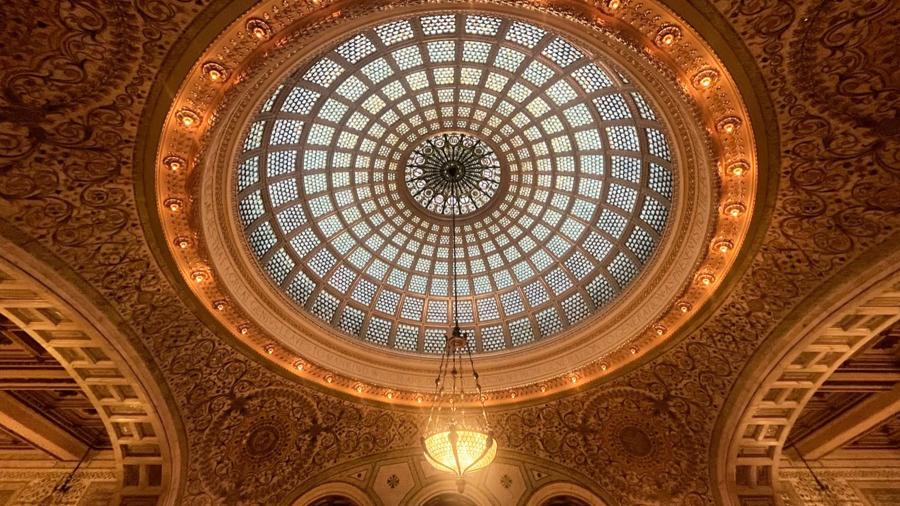
The class was graced in winter sunlight under the Preston Bradley Hall Tiffany Dome in the Chicago Cultural Center, formally the first Chicago Public Library. The massive translucent dome, spanning more than 1,000 square feet, is the largest Tiffany glass dome in the world. Its glass panels are cut in the shape of fish scales, adorned by the signs of the zodiac at the dome’s peak.
They also visited the Harold Washington Library, the Newberry Library, the Museum of Contemporary Art, the Smart Museum of Art and the Renaissance Society.

Walking through Chinatown, they stopped for a bite to eat – steamed trays of dim sum piled high on the table was Saindon’s favorite meal of the week.
They toured the neighborhoods of Hyde Park, West Town and Pilsen, visiting the Pilsen Arts and Community House.
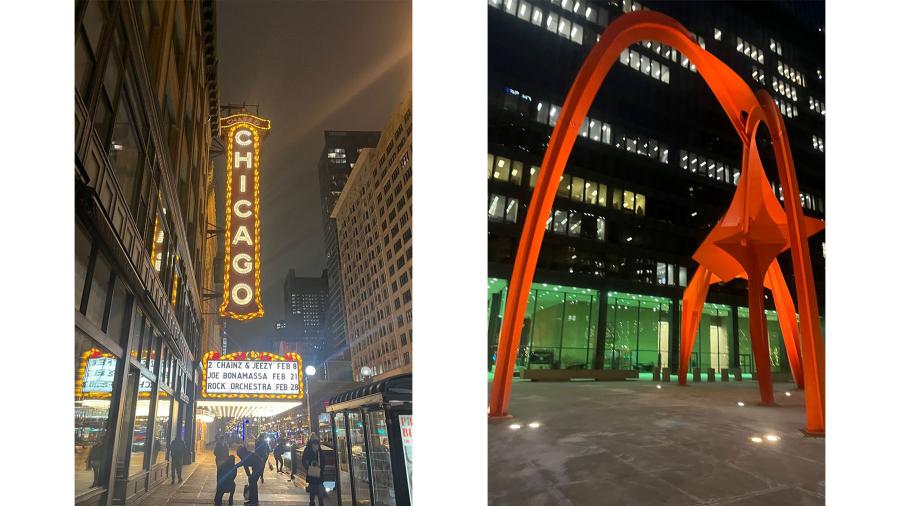
Walking back to the hotel on the last night of their trip, the class stepped off the subway near the Chicago Theatre and strolled under the famous “CHICAGO” sign, illuminated in red and gold.
At Federal Plaza, they passed Alexander Calder’s 53-foot-tall Flamingo sculpture – its red, elegant arcing neck sweeping downward to graze invisible shrimp off the pavement.
“Honestly, I don’t see how it would be a flamingo, but I guess it’s up for interpretation. It was quite beautiful to see, especially at night,” said Saindon, who will graduate in spring 2027.
UW-Stout’s School of Art and Design, one of the largest public art schools in the Midwest, offers bachelor’s degrees in animation and digital media; game design and development-art; graphic design and interactive media; illustration; industrial and product design; interior design; studio art; arts administration and entrepreneurship; fashion design and development; and video production, as well as an M.F.A. in design.





